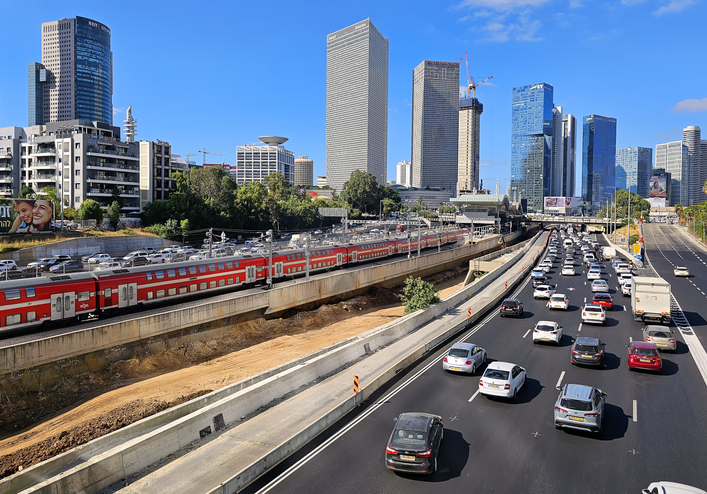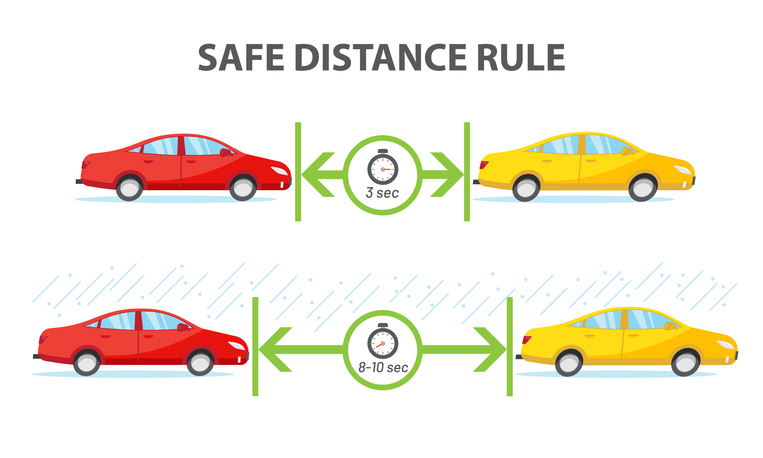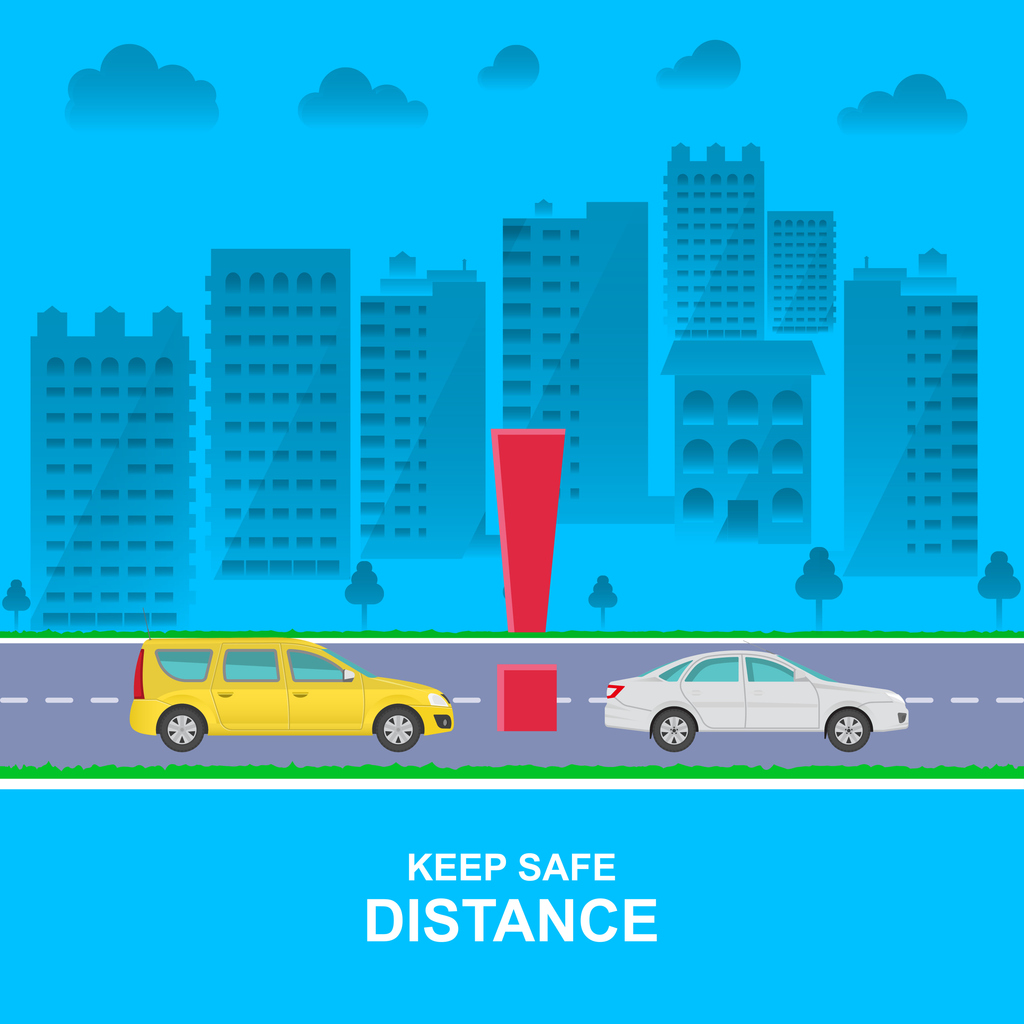Maintaining driving at safe following distance principles is crucial for all drivers, especially when faced with challenging driving conditions such as bad weather, nighttime, and heavy traffic. Adjusting your distance properly ensures you have enough time to react, brake safely, and avoid collisions that are common causes of accidents on the road. This article explains how drivers should modify their following distance in various scenarios and provides practical advice for safer driving.
Understanding the Importance of Driving at Safe Following Distance in Bad Weather
When driving in wet or icy conditions, the safe following distance increases significantly. Roads slickened by rain or covered in ice reduce tire traction and extend the braking distance required to stop your vehicle safely. Rain and wet weather demand slower speeds and greater space between vehicles to compensate for the increased risk of hydroplaning or skidding.
The foundational principle for safe spacing is commonly known as the three-second rule, where a driver counts three seconds after the vehicle ahead passes a fixed point before reaching that same point themselves. However, this distance is a minimum during perfect driving conditions. In rainy or snowy weather, experts recommend doubling or even tripling this interval. This extended buffer zone allows for ample reaction time to sudden stops or hazards despite limited road grip.
Drivers should continuously assess weather conditions and adjust their following distance accordingly. For instance, heavy rain, snow, or sleet can increase stopping distances by up to tenfold. Failing to extend driving at safe following distance under these conditions can lead to rear-end collisions or loss of vehicle control. Practical advice includes slowing speed well below posted limits and avoiding abrupt steering or braking maneuvers to maintain vehicle stability in adverse weather.

Adapting Driving at Safe Following Distance for Nighttime Roads
Nighttime driving presents unique challenges that require special attention to safe following distances. Reduced visibility, glare from headlights, and fatigue can impair a driver’s ability to perceive hazards quickly and respond in time. Because headlights illuminate only a limited stretch of road, drivers have less time to see and react to changes such as sudden stops or obstacles.
The standard three-second rule remains a valid baseline for following distance at night but should be increased to four or even five seconds. This extension provides more time to process visual cues and react safely. Reduced speed is also crucial since stopping distance depends on how quickly you travel. Driving slower gives your eyes more time to adapt and detect hazards, thereby complementing the larger following distance (NHTSA).
In addition to extending the distance, vigilant night driving requires eliminating distractions and being alert to pedestrians, cyclists, and animals that may be harder to see. Drivers are advised to use their high beams carefully, switching to low beams when approaching oncoming traffic to prevent blinding other drivers while still maximizing visibility. Planning routes ahead and anticipating changes in traffic or road conditions contribute to better spacing and safer nighttime driving overall.
Maintaining Safe Following Distance in Heavy Traffic Conditions
Heavy traffic often means stop-and-go driving, which can test a driver’s patience and judgment regarding following distances. Tailgating or crowding the vehicle in front increases the risk of collisions, especially if sudden braking occurs. Therefore, even in slow-moving traffic, it is vital to preserve a safe buffer.
Experts advise maintaining at least a three-second gap when conditions allow. However, in heavy traffic where frequent stops happen, it is essential to be prepared to increase that gap further as situations change, allowing for unpredictable driver behavior. A cautious approach involves anticipating braking well in advance and easing off the accelerator rather than slam-braking to keep vehicle momentum controlled, which reduces the chances of rear-end crashes.
Additionally, extra space is needed when driving behind larger vehicles like trucks or buses. These vehicles require longer distances to stop and can limit your visibility of the road ahead. By maintaining an increased following distance under these circumstances, you provide more time to observe traffic changes and react appropriately, keeping yourself and others safe.

Legislative and Legal Perspectives on Driving at Safe Following Distance
Safe following distance is not just a recommended driving practice; many jurisdictions enforce it through laws requiring drivers to maintain a clear and reasonable distance based on speed, traffic, and road conditions. For example, Texas law mandates an “assured clear distance” that drivers must maintain, which is intended to ensure they can stop safely for any hazard ahead (when to increase the safe following distance).
Legal statutes emphasize that failure to keep a safe following distance can be grounds for liability in accidents, particularly rear-end collisions. This legal view aligns with safety practices that encourage drivers to adjust their spacing dynamically and avoid distracted driving to minimize risks. State or local traffic regulations, often codified on government websites such as the National Highway Traffic Safety Administration (NHTSA.gov), reinforce these principles by offering detailed guidelines to motorists (NHTSA safe driving guidelines).
Practical Tips for Enhancing Driving at Safe Following Distance
When applying driving at safe following distance in real-world conditions, several practical measures enhance safety:
Always adjust your following gap to be larger than the baseline three-second rule when conditions are less than ideal such as in rain, fog, nighttime, or congested traffic. Use fixed roadside objects like signs or trees to gauge your following distance accurately by measuring the time between the vehicle in front passing the object and you passing the same point. Avoid distractions entirely to maintain complete focus on road conditions and the behavior of the vehicle ahead. Recognize that larger vehicles, heavy loads, or towing require even more space due to increased stopping distances. Monitor changing conditions actively and be prepared to increase your safe following distance proactively.
Incorporating these strategies ensures that your driving behavior minimizes crash risks and complies with road safety laws.

Conclusion
Safe driving involves maintaining the proper driving at safe following distance tailored to weather, light conditions, and traffic density. Whether maneuvering through heavy rain, navigating dark roads at night, or dealing with bumper-to-bumper traffic, increasing your following distance is essential to allow sufficient time for safe braking and hazard avoidance. Observing these precautions, supported by legal requirements and safety guidelines, enhances roadway safety for everyone.
For more detailed legal guidance on when and how drivers should increase following distance, consider visiting this authoritative blog on when to increase the safe following distance from Elmore Injury Law.